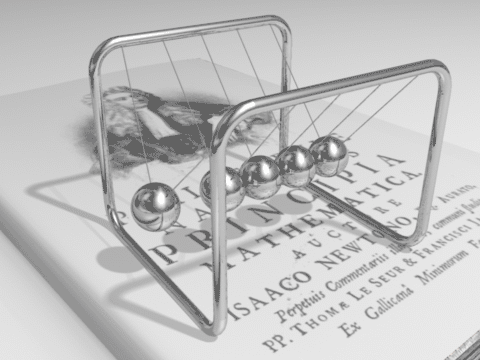
DemonDeLuxe CC BY-SA 3.0
Momentum is a quantity of a moving object. If an object is moving then it has momentum. You could say that momentum is mass in motion. The amount of momentum that an object has depends on how much stuff is moving and how fast the stuff is moving. The momentum of any object that is at rest is zero.
Momentum has a direction as well as a magnitude. (A proton circulating with a beam in the LHC will have angular momentum as it moves in the circular path.) Both mass and velocity are directly proportional to momentum.
|
Formula: p = mv |
Key: p: momentum m: mass v: velocity |
Velocity has a direction in three-dimensions. The momentum of an object will have the same direction as the velocity of that mass.
The standard metric unit of momentum is the kgm/s
A proton has a tiny intrinsic mass of 1.67x10-27kg. (Particle physicists generally call this intrinsic mass the invariant mass.) When a proton achieves its maximum velocity of 0.99c, that’s almost 300 000 000ms-1, in the LHC, its momentum is huge because its velocity is huge.
Conservation of momentum
On collision the momentum of the system is conserved. (This is assuming a closed system where no external forces continuing to act and no exchange of matter with the environment.) It is this conservation of momentum between colliding particles in the LHC that allows scientists to ‘see’ interesting events. On collision newly created particles will move away from the collision point in planes that are transverse to the collision plane. When tracks are on transverse planes that are close to perpendicular to the collision they might indicate that a new particle has been created so they are particularly interesting to physicists.